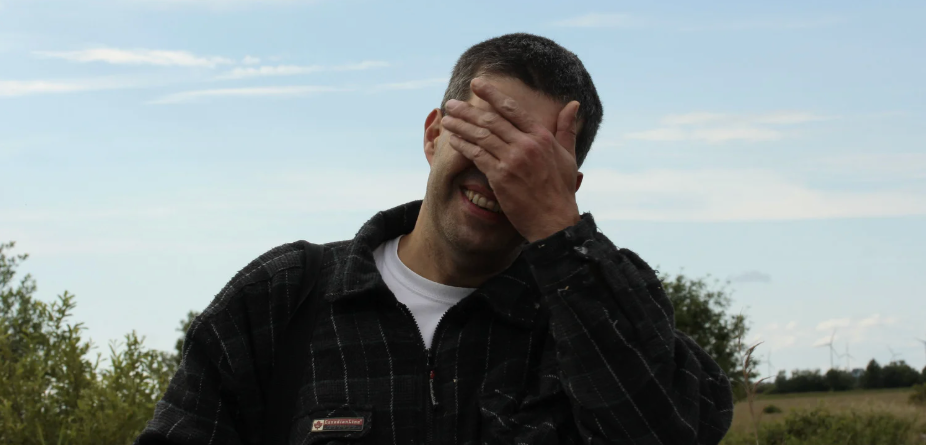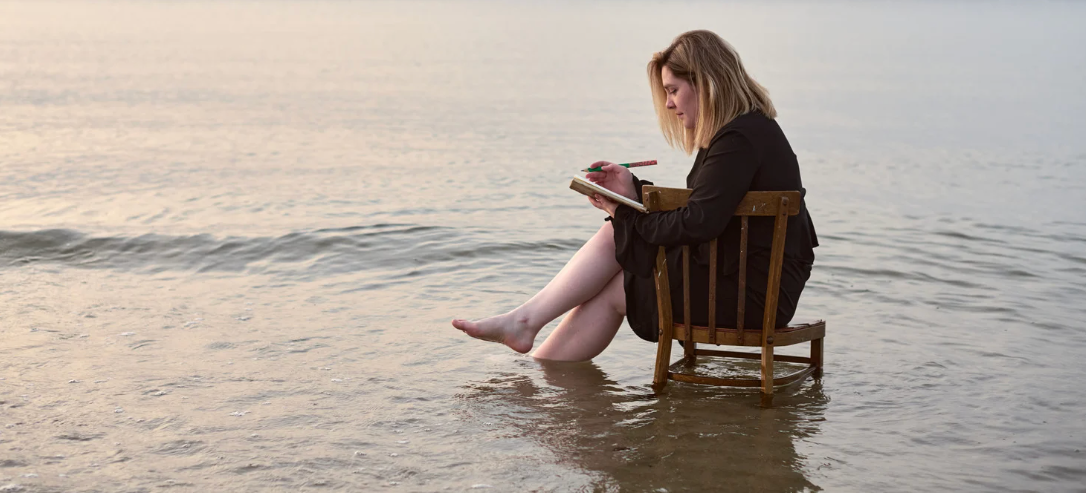Autistic woman ordering room service offers rare insight into internal struggles
What the person on the other end of the phone doesn't see is an entire story unto itself.

Ordering room service can require herculean effort for some people.
One of the weirdest parts of being human is how none of us really knows what's happening in another person's head or how other people act when they're by themselves. We often wonder if we're the only ones whose brains work a certain way or if other people go through the same mental or emotional obstacle courses we do when performing certain tasks.
When you live with someone who deals with mental/emotional challenges like anxiety or someone who lives life with neurodivergence, you see a bit more of people's behind-the-scenes reality. But even then, there are things we don't fully see because they're happening internally.
One autistic woman, however, has offered an insider look into her internal processing in a video showing her ordering room service at a hotel for the first time.
Paige Layle is a Canadian woman who shares various aspects of her life on social media to raise awareness and advocate acceptance for autism and ADHD. In a TikTok video that's been viewed 4 million times in one day, she explained that she was at a hotel and wanted to order breakfast, then walked viewers through her whole process of anxiously preparing, actually making the phone call and her emotional relief after the fact.
People who don't struggle with the uncertainty of a phone call, even a basic one like ordering room service, may wonder what all the fuss is about. But people on the spectrum and people who struggle with social anxiety or anxiety about making phone calls will likely recognize themselves in this video.
Watch:
@paigelayle calling for room service for the first time 🙈😅 #actuallyautistic #autism #paigelayle #foryou
The rehearsing what you're going to say as well as what the other person will probably say, the silent freakout upon actually pushing the button, the sudden shift into "totally normal person" mode once the phone call commences, the adrenaline explosion after hanging up, the shaking out of the excess nervous energy, the "that was okay, but awful" sentiment—it's all so familiar to so many people, whether they're dealing with autism, ADHD, anxiety or some combination of them all.
But the person on the other end of the phone would never have guessed this was happening behind the scenes. Paige even handled the unexpected coffee addition with zero issue. Knowing that unexpected things might come up in a conversation is what creates anxiety about phone calls like this, so the fact that she didn't skip a beat when the dialogue diverged from what she'd planned out in her head was genuinely impressive.
Some people might wonder about her "and no one's mad at me or anything" remark, but that's not an unusual concern for people on the autism spectrum as well as people with ADHD and others who might experience rejection sensitive dysphoria.
People in the comments commiserated with Paige while cheering her on.
"I’ve only ordered room service ONCE and this was the EXACT experience. I earned that French toast," shared one commenter.
"You did amazing!!!! I’ve actually never ordered room service because I hate phone calls… too much anxiety!" wrote another.
"The progression from 'anticipatory panic' to 'perfect execution' and finally 'post-mental breakdown' was so real lol i relate," shared another.
"The way you did it perfectly but wrapped that in panic is me everyday," wrote another.
And that's really the crux of it. So many people struggle mightily internally while successfully doing everyday things, with no one on the outside ever knowing the mental and emotional journey it took for them to do those "normal" things. Hopefully, videos like this will help us all give a little more grace and understand why people might be more exhausted or less willing to do things than it seems like they should be. When it's this much work to order a yogurt, imagine how much energy it takes to do other things. This is where a little awareness and empathy can go a long way toward acceptance and understanding.
Follow Paige Layle on TikTok and check out her upcoming book: "But Everyone Feels This Way: How an Autism Diagnosis Saved My Life."
- Woman recreates 'Inside Out' from a neurodivergent standpoint and people are feeling seen ›
- How an early autism diagnosis 'made all the difference' for one boy ›
- Autistic employee goes viral with office sign that breaks down 'bad communicator’ stereotypes ›
- Adults are diagnosing themselves as autistic, it's valid - Upworthy ›
- Rabbi explains connection between empathy and social anxiety - Upworthy ›
- 5 tricks for people with phone anxiety to end a phone call - Upworthy ›
- 'Conventionally attractive' autistic woman reveals a big problem - Upworthy ›




 Newborn's first cry marks a fresh beginning.
Newborn's first cry marks a fresh beginning. Newborn baby.
Newborn baby.


 Woman in denim jacket covers face with sleeve, standing outdoors with blurred background.
Woman in denim jacket covers face with sleeve, standing outdoors with blurred background. Woman with outstretched arms in a sunlit field, enjoying the outdoors.
Woman with outstretched arms in a sunlit field, enjoying the outdoors. Lush forest with vibrant green and orange foliage in soft, misty sunlight.
Lush forest with vibrant green and orange foliage in soft, misty sunlight. Friends laughing and drinking coffee at a cozy cafe table.
Friends laughing and drinking coffee at a cozy cafe table. Woman with curly hair in sunlight, eyes closed, wearing a purple top.
Woman with curly hair in sunlight, eyes closed, wearing a purple top. Man smiling with hand over face, standing outdoors against a blue sky background.
Man smiling with hand over face, standing outdoors against a blue sky background. Hand painting a still life on canvas with blue and orange tones.
Hand painting a still life on canvas with blue and orange tones. Woman sitting on a chair in the water, writing in a notebook at sunset.
Woman sitting on a chair in the water, writing in a notebook at sunset.
 Women walking down a street.Image via Canva Photos.
Women walking down a street.Image via Canva Photos.  Woman aware of her surroundings in a parking garage. Image via Canva Photos.
Woman aware of her surroundings in a parking garage. Image via Canva Photos.
 "You're hilariously brilliant at everything you hate."
"You're hilariously brilliant at everything you hate."  "Bridget is authentically herself…and triumphs in her own way."
"Bridget is authentically herself…and triumphs in her own way."  "They're written in some curious language that I can't really understand."
"They're written in some curious language that I can't really understand."